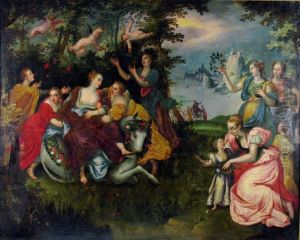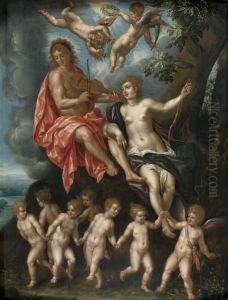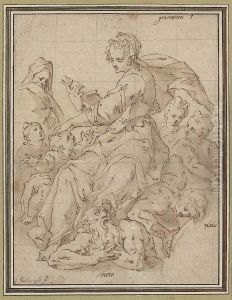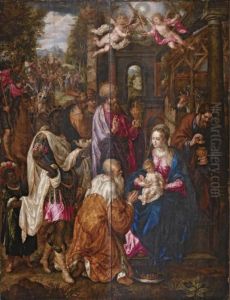Hendrik De Clerk Paintings
Hendrik de Clerck was a Flemish painter born in 1570 in Brussels, which was then part of the Habsburg Netherlands. He was a prominent figure during the late Renaissance and early Baroque periods. De Clerck's work is characterized by a meticulous approach to detail and a rich color palette, often focusing on religious and mythological themes.
De Clerck's early life is not well-documented, but it is known that he was a pupil of the landscape painter Marten de Vos. His style was heavily influenced by the Italian Renaissance, as were many artists of his time due to the cultural exchange brought about by increased travel and the presence of Italian works in Northern European collections. De Clerck was also influenced by his contemporaries in the Low Countries, including Peter Paul Rubens, with whom he occasionally collaborated.
Throughout his career, De Clerck worked for several high-profile patrons, including the Archduke Albert VII of Austria and his wife, the Infanta Isabella Clara Eugenia of Spain, who were the sovereigns of the Spanish Netherlands. De Clerck's position allowed him to work on important commissions, such as altarpieces for local churches and designs for tapestries. His paintings often included intricate details and iconography, which required a deep understanding of Christian symbolism and narratives.
Despite his success, Hendrik de Clerck was not as well-known as some of his contemporaries. However, his work has been appreciated for its contribution to the Flemish painting tradition and its reflection of the transition from Mannerism to Baroque styles. De Clerck died in 1629 in Brussels, and although his fame may have been overshadowed by more prominent painters of the era, his art continues to be studied and admired for its technical skill and historical value.



